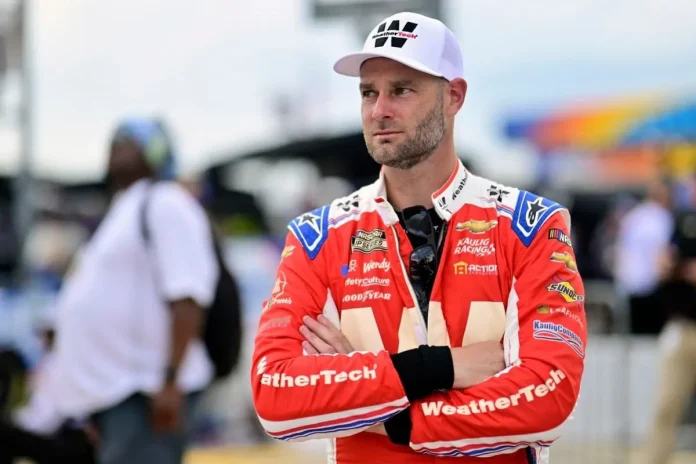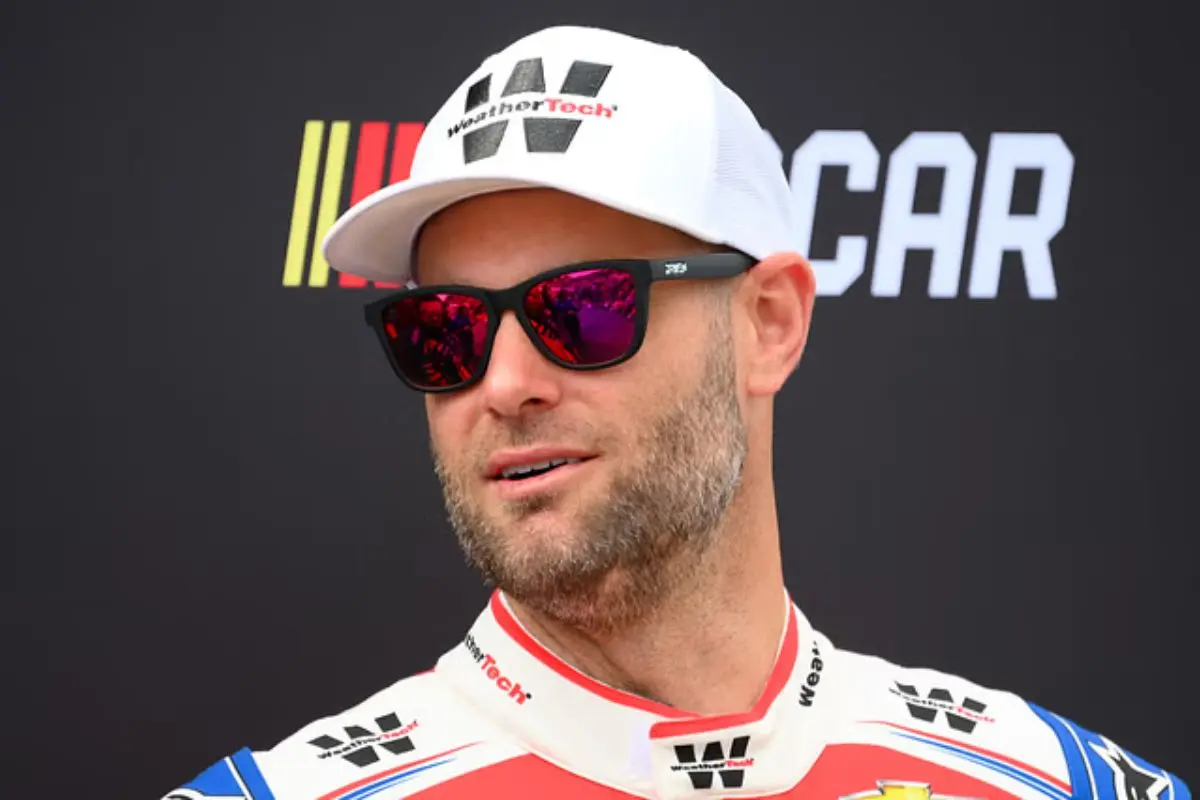Shane van Gisbergen trashes NASCAR’s Xfinity cars, labeling it a ‘forklift’ due to its unsettling and awkward performance on the track. His comments reflect a broader concern among drivers about the car’s dynamics, particularly its rear-end movement which poses challenges in competitive scenarios. Despite achieving notable wins throughout the season, Shan van Gisbergen’s discomfort highlights a fundamental issue in vehicle setup for road courses.
Key Highlights
- Shane van Gisbergen described the NASCAR Xfinity car’s handling as unsettling and likened it to a ‘forklift’ during his critique.
- He expressed discomfort with the vehicle’s dynamics, particularly its rear end movement, at Talladega Superspeedway.
- Van Gisbergen’s comments highlight the challenges faced by drivers adapting to the Xfinity car’s handling characteristics.
- His critique may influence future design considerations and regulations within the NASCAR series to improve vehicle performance.
- The discussion underscores the importance of driver experience in navigating the unique challenges posed by the Xfinity car.
Shane van Gisbergen’s Racing Journey and NASCAR Debut
Shane van Gisbergen’s racing expedition is marked by a remarkable change from dominating the Supercars Championship to making a notable impact in NASCAR. With three Supercar championships under his belt, van Gisbergen made headlines in 2023 by securing three victories in the NASCAR Xfinity Series. His debut in NASCAR was particularly electrifying, highlighted by a thrilling win on the road course at Chicago, a race where the combination of his skill, the track layout, and inclement weather played to his favor.
Despite this initial success, van Gisbergen’s transformation has not been devoid of challenges. One of the most notable hurdles he faces is the disparity in vehicle dynamics between the Supercars and NASCAR’s Xfinity Series.
Having raced under the auspices of Trackhouse Racing‘s “Project91” initiative, he initially encountered the Next-Gen Cup Series car, which shares design elements with global racing standards. However, the Xfinity car’s distinct handling characteristics caught him off guard, leading him to humorously liken it to a “forklift.”
As he continues to navigate these challenges, his path offers valuable insights into the intricacies of racing across different formats and the resilience required to succeed at the highest levels.
Shane van Gisbergen’s Transition to NASCAR Xfinity Series
The shift to the Xfinity Series has proven to be a complex expedition for Shane van Gisbergen, as he navigates the notable differences in vehicle dynamics between the NASCAR Xfinity car and the Next-Gen Cup Series vehicle. Despite his extensive racing background, including prestigious wins at Bathurst and a podium finish at the 24 Hours of Daytona, van Gisbergen’s adaptation has not been entirely seamless.
His discomfort became apparent during an interview at Talladega Superspeedway, where he openly described his experience with the Xfinity car. The vehicle’s handling characteristics were particularly disconcerting, leading him to liken it to a “forklift.” This analogy highlights the considerable challenges posed by the differences in design and mechanics.
“I like the Cup car because it feels like every other car in the world I’ve driven, and then I got in the Xfinity car and had no idea what was happening. It drives like a forklift, the way the rear end moves, how it drives but if you speak to drivers here, they like it better.” – Shane van Gisbergen
Van Gisbergen acknowledged the unique handling of the Xfinity car, stating, “The rear end is really, really interesting, how it moves around.” While he struggles with the adjustments, his willingness to accept the challenge speaks to his competitive spirit. As he continues to refine his skills within this new context, the progression may ultimately contribute to a deeper understanding of NASCAR’s varied racing disciplines.
Transcribing a SVG interview from Dega and I think y'all will appreciate this
"I like the Cup car because it feels like every other car in the world I've driven and then I got in the Xfinity car and had no idea what was happening. It drives like a forklift, the way the rear end…
— Matt Weaver (@MattWeaverRA) November 20, 2024
Shane van Gisbergen’s Success in NASCAR Xfinity Series
Success in the NASCAR Xfinity Series is often measured not only by victories but also by the ability to plunge and excel in diverse racing conditions. Shane van Gisbergen‘s performance in the series exemplifies this multifaceted approach to success, as he navigated the unique challenges presented by the Xfinity car, which he aptly described as a ‘forklift.’
Despite these difficulties in maneuverability, van Gisbergen emerged as a formidable competitor, capturing three victories this season, all on road courses—Portland, Sonoma, and Chicago.
His remarkable achievement of a 16.49-average finish highlights his consistent excellence throughout the season. While he did not qualify for the championship round, his ability to adapt and thrive in a demanding environment has garnered admiration from peers and experts similarly.
“I wanted to learn more than anything, and I wanted to get to battle with him because he’s just really good at creating shapes and angles and passing.” – Shane van Gisbergen
Importantly, Kyle Larson, a seasoned NASCAR driver, expressed his appreciation for racing alongside van Gisbergen, emphasizing his skill in creating shapes and angles during races.
This recognition speaks volumes about van Gisbergen’s skill and tactical insight on the track. His success is not merely a byproduct of his victories; it is a reflection of his ability to master the intricacies of the Xfinity Series, even when faced with a challenging car.
Similarity with Another Road Course Ace – Tyler Reddick
Tyler Reddick’s impressive performance in the NASCAR landscape mirrors that of Shane van Gisbergen, particularly in their shared affinity for road courses. Both drivers have showcased exceptional skill in maneuvering the complexities of these tracks, with Reddick achieving notable success this season by clinching the regular season championship and securing three victories, including prestigious wins at Circuit of the Americas, the Indianapolis Road Course, and Road America.
Reddick’s expertise on road courses aligns closely with van Gisbergen’s reputation, exemplifying their ability to adapt and excel in challenging conditions. This season has been a breakthrough for Reddick and 23XI Racing, showcasing not only his road course capabilities but also his improved performance on superspeedways and ovals.
“Where a lot of drivers would have issues under braking with the [last] car was with the old-school truck arms, and just how much those flex and wheel hop. Once you had axle hop — wheel hop — you were more than likely crashing. The more you had that axle hop if you didn’t crash the car, you would just shake all the parts loose.” – Tyler Reddick
His experiences with the Next-Gen car have further refined his approach, particularly as he praises the car’s durability and handling characteristics compared to the previous Gen 6 model. Reddick articulated the advantages of the Next-Gen car’s independent rear suspension, highlighting the relief from issues like axle hop that plagued earlier models.
“With the Next Gen car, that’s totally different. With independent rear suspension, all the beefy suspension parts it has, you don’t really have situations where the car falls apart like the other car did. You can launch it across curbs as hard as you want.” – Tyler Reddick
This technological advancement allows drivers to push the limits without the fear of catastrophic failure, a sentiment echoed by van Gisbergen. The synergy between their driving styles and the advancements in car design emphasizes a new era of competitiveness in NASCAR, particularly on road courses where precision and confidence are paramount.
The Impact of Shane van Gisbergen’s Success on NASCAR
Shane van Gisbergen’s remarkable entry into the NASCAR scene has sparked considerable interest and concern among competitors, particularly regarding the implications of his adeptness with the Next-Gen car. His success on road courses has not only highlighted his driving capabilities but has also raised critical questions about the competitive landscape of NASCAR heading into 2025.
As van Gisbergen continues to excel, especially in environments that demand precision and adaptability, other drivers must reassess their strategies and approaches. The Next-Gen car, which has already generated mixed reactions from seasoned competitors, now poses an extra challenge with a driver like van Gisbergen, who has illustrated a unique ability to master its handling quirks.
His comfort with the vehicle contrasts sharply with the sentiments expressed by other drivers, who have likened the Xfinity car to a ‘forklift,’ indicating a broader issue with vehicle dynamics that may disadvantage them.
The implications of van Gisbergen’s success extend beyond individual performance; they signal a potential shift in the competitive hierarchy of NASCAR. Road course specialists, emboldened by van Gisbergen’s achievements, may find renewed confidence and motivation to improve their own skills.
News in Brief: Shane van Gisbergen Trashes NASCAR’s Xfinity Cars
The performance of Shane van Gisbergen in the NASCAR Xfinity Series highlights the complexities of adapting to a new racing environment. Characterized by unique handling challenges, particularly in comparison to established competitors, van Gisbergen’s experience reflects the broader implications of driver adaptability and vehicle dynamics in motorsport.
The exploration of these themes not only showcases the intricacies of racing but also emphasizes the potential for growth within the series, paving the way for future innovations and competitive strategies.
ALSO READ: Shane Van Gisbergen Leaves Kaulig Racing and Heads to Trackhouse Racing With Big Expectations





